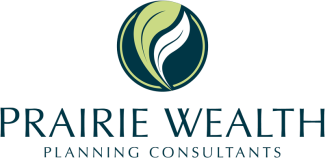
Make an Impact - Charitable Giving
As the holiday season approaches, we often find ourselves reflecting on our good fortune and how to make an impact on our community. Involving family members in charitable planning can be rewarding and instill a sense of philanthropy in children and grandchildren.
As you create lasting family legacies this holiday season consider a few philanthropic strategies.
Maximize Your Legacy
In any given year, up to 75% of your net income may be donated to charity. That increases to 100% in the year you pass away. Building charitable giving into your estate plan supports your favourite causes long after you’re gone.
A qualified financial planner can help estimate your potential tax bill, and present options to reallocate dollars otherwise earmarked for CRA to charities of your choice; up to 100% of your income.
RRSP and RRIF Beneficiary
Consider including charities as a beneficiary on your RRSP or RRIF accounts. When a qualified charity is named beneficiary, most - if not all - of the tax on the owner’s final tax return can be offset by the credit generated by the donation.
Donate Securities In-Kind
If you own non-registered investments, such as stocks or mutual funds, consider donating them directly, or in-kind, to charity rather than selling them first and then donating the cash. When you sell the investment, you pay tax on 50% of the gain. A donation of an investment in-kind to a registered charity results in no capital gain. The charity receives the same value either way, but you save the tax.
Give Your Donation a Boost
When it comes to charitable giving, life insurance can be a very effective tool to leave an even bigger impact to the causes you care about.
Naming a charity as beneficiary on your insurance policy means the charity can issue a tax receipt for the full amount of death benefit when received; also significantly lowering your final tax bill.
Another method is to transfer the ownership of a policy to a charity during your lifetime and continue to make the premium payments. In this case, the charity still receives the death benefit, but you get a charitable receipt for the amount of premium each year. Both approaches can be effective.
Donor Advised Funds
Donor Advised Fund programs are making it easier for average families to create charitable legacy accounts akin to a private foundation. They are designed for those who:
- want to give, but don’t know which charities to support
- don’t feel comfortable leaving a large irrevocable amount to just one cause
- want to create a legacy that perpetually supports charities
- don’t have the resources to manage their own private foundation
These platforms act like an intermediate charity and are designed to facilitate charitable giving. The end beneficiaries can range from large national charities to small local community groups.
Individual family households may donate to the family legacy account. Some families use their legacy account to create new holiday traditions – sharing what charitable causes they’ve decided to allocate their contribution toward each year.
Consult with a Certified Financial Planner to build an effective charitable giving strategy that fits your family’s unique values and make the most of the holiday spirit.
Prairie Wealth Planning Consultants

